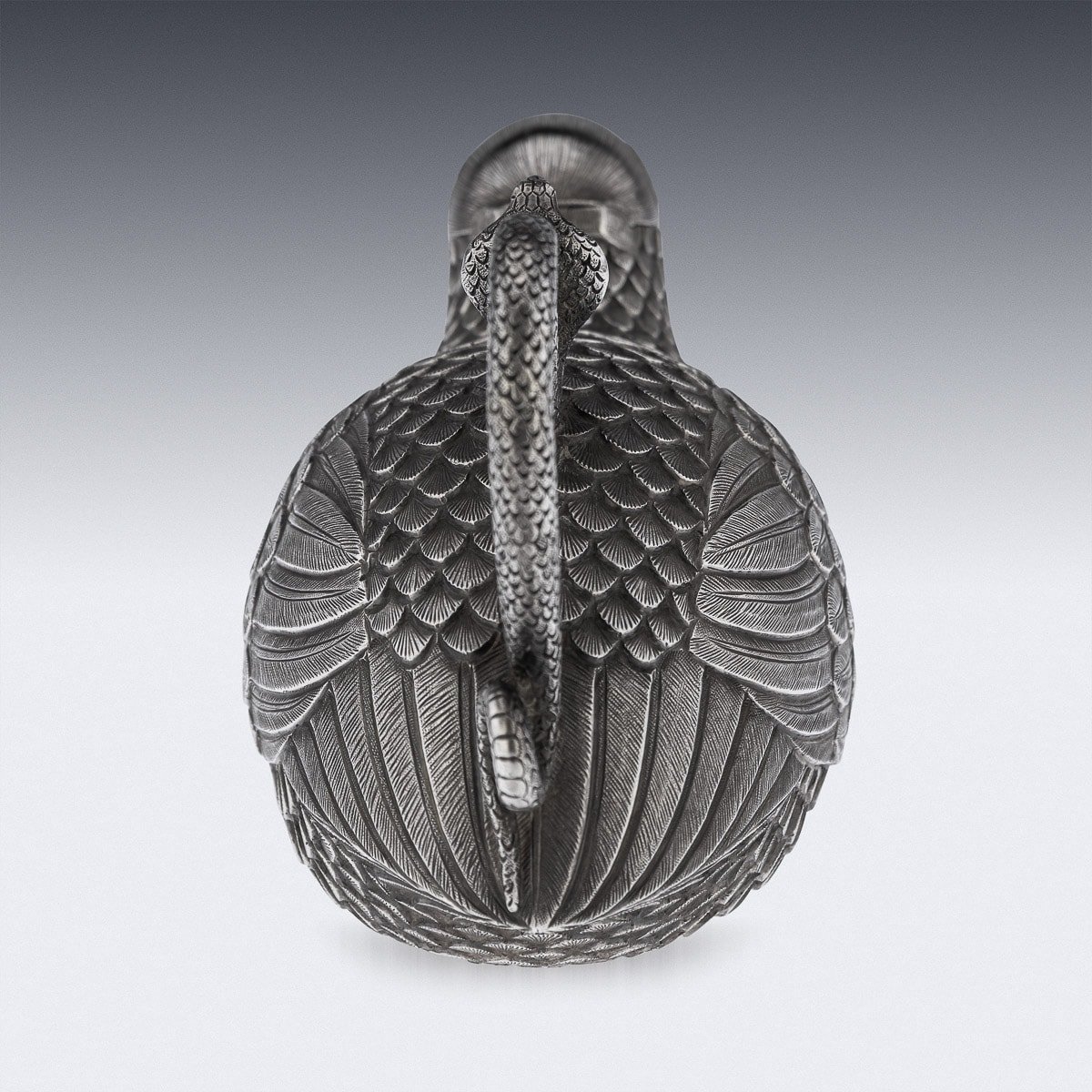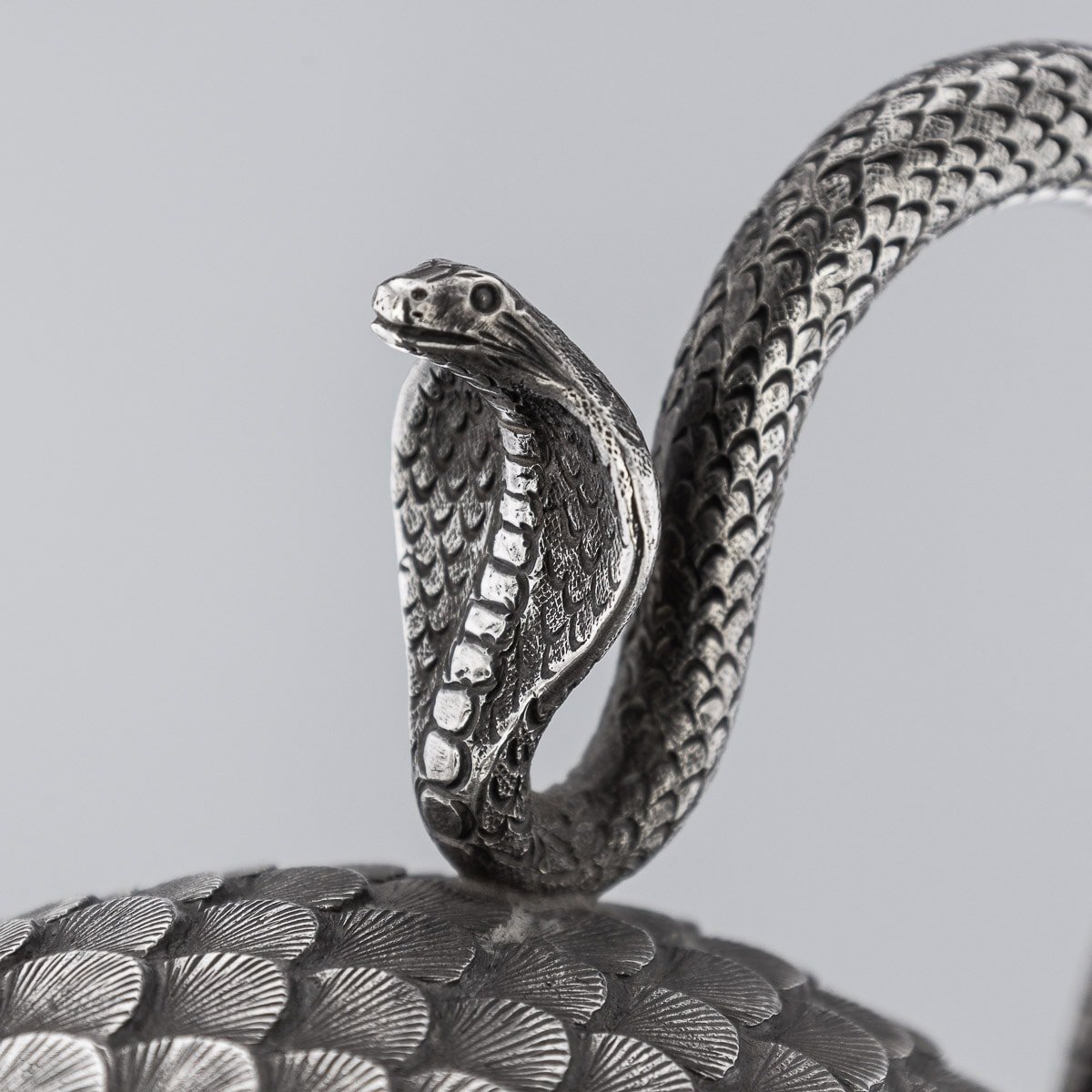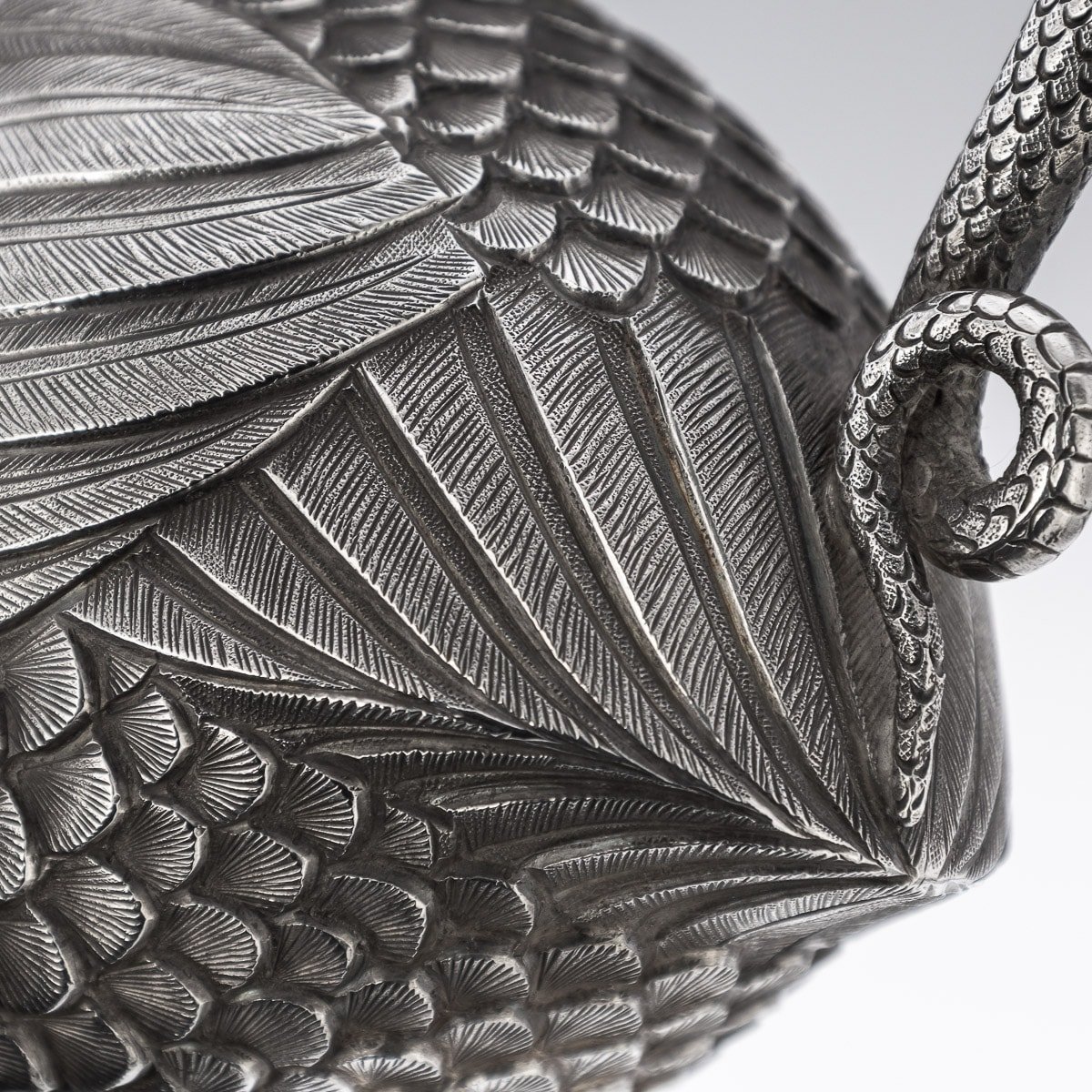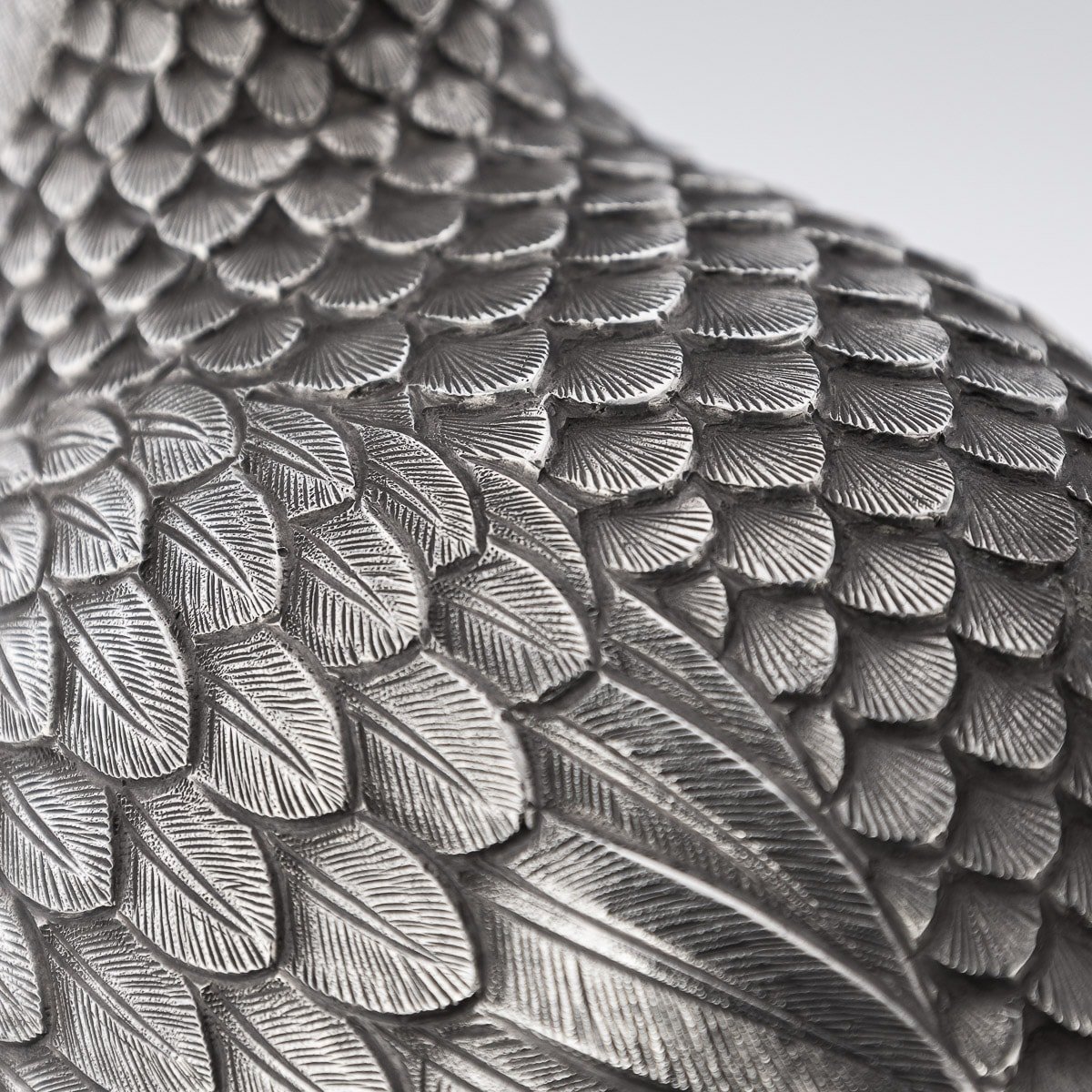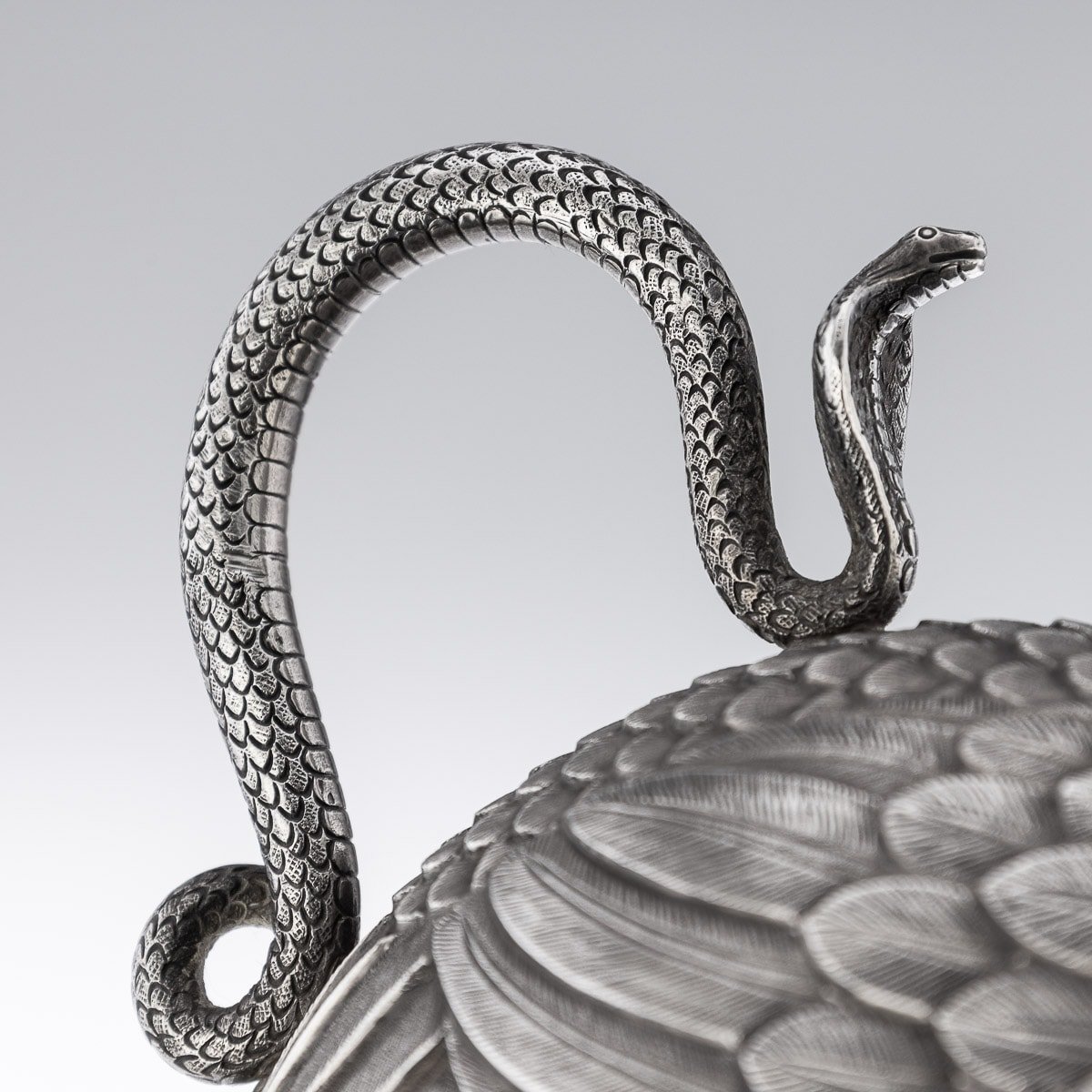ANTIQUE 20thC ROYAL INDIAN OOMERSEE MAWJEE SOLID SILVER QUAILS CREAM JUG c.1920
Antique early 20th Century Indian cutch solid silver cream jug, modeled as seated, well-rounded quail, realistically decorated with detailed feathers and richly gilded interior. The head hinging open along the beak to serve as the spout and the serpent serving as the handle.
Hallmarked O.M BARODA (see comparisons with base of the set in the Virginia Art Museum, figs. 4-5).
Reference Number: A8841
Antique early 20th Century Indian cutch solid silver cream jug, modeled as seated, well-rounded quail, realistically decorated with detailed feathers and richly gilded interior. The head hinging open along the beak to serve as the spout and the serpent serving as the handle.
Hallmarked O.M BARODA (see comparisons with base of the set in the Virginia Art Museum, figs. 4-5).
Reference Number: A8841
Antique early 20th Century Indian cutch solid silver cream jug, modeled as seated, well-rounded quail, realistically decorated with detailed feathers and richly gilded interior. The head hinging open along the beak to serve as the spout and the serpent serving as the handle.
Hallmarked O.M BARODA (see comparisons with base of the set in the Virginia Art Museum, figs. 4-5).
Reference Number: A8841
DESCRIPTION
Antique early 20th Century Indian cutch solid silver cream jug, modeled as seated, well-rounded quail, realistically decorated with detailed feathers and richly gilded interior. The head hinging open along the beak to serve as the spout and the serpent serving as the handle.
Another almost identical matched three piece quails tea set, teapot with a leaf-capped handle and the milk jug with a snake by Oomersee Mawjee Jr, formerly in the Paul F. Walter Collection can now be seen in the Virginia Museum of Fine Arts, 2011.248 (See Vidhya Dehejia, Delight in Design: Indian silver for the British Raj, New York, 2008, no. 23, pp. 92 & 93) and undeniably a lesser quality example was sold in Bonhams, Indian, Himalayan & South Asian art, lot 62, 18 March 2013, making this the earliest, most complete and finest quality example to have come on the market.
Oomersee Mawjee is recognized as one of India's greatest silversmiths. Based in Bhuj, in the Kutch district of Western India he was appointed court silversmith to his highness the Mahrao of Cutch, also very popular with patrons from the British Army and civilian personnel. He also enjoyed the patronage of Anglophile Indians who adopted the western fashion of preparing tea with the three separate elements.
The creram jug presented appears to be the most coherent in terms of quality and design, suggesting that it might have been one of the first being produced, possibly after a design by Oomersee Mawjee senior (renowned for his naturalistic handles in the form of cobras).
Another element that makes the present item particularly interesting is the fact that Oomersee Mawjee Jr. in the 1920-1930 was master silversmith in the employ of the Gaekwad of Baroda (fig. 3, Dehejia, cit. loc.). Maharaja Sayajirao Gaekwad III (1863-1939) was a noted patron of arts, and during his reign Baroda became a hub for artists and scholars. Even the celebrated painter, Raja Ravi Varma, moved to his court during this period. He amassed an impressive collection of jewels, jewellery and silverware.
This might explain why the present design appears to be rarer than the one shaped as black francolins produced by his father, Oomersee Mawjee senior.
Hallmarked O.M BARODA (see comparisons with base of the set in the Virginia Art Museum, figs. 4-5).
CONDITION
In Great Condition - No Damage.
SIZE
Height: 11cm
Width: 15cm
Depth: 8cm
Weight: 280g




